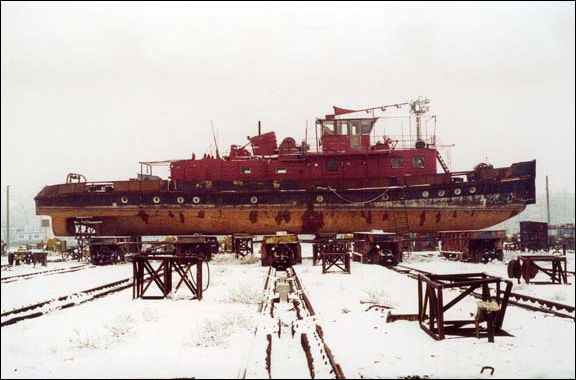Asta e: Outsider Culture in Romania
In his new documentary Asta e, Thomas Ciulei offers a fascinating and humane glimpse of life on the fringes of Rumanian society. During the 1980’s, under communism, Romania had the lowest standard of living of any eastern European country. Asta e conveys a sense of that hard-scrabble existence today, without any social infrastructure or safety net. Ciulei focuses on four people in the little town of Sulina on the Danube, who develop inventive ways to earn a living outside the mainstream economy.

Ciulei’s first portrait depicts Toni and Varvara, a dysfunctional married couple in their fifties who work the family farm. Toni drinks heavily and procrastinates his chores despite cajoling from Varbara. In a curious scene, Toni sits drunk as in a trance while Varvara prepares a magic elixir (presumably to cure his drinking problem). Varvara then recites a magical incantation while making the sign of the cross in the air with a knife. Transylvania is after all is a province of Romania, and superstitions abound. Shortly after this scene, Varvara is caught in an exuberant state of inebriation while a sober Toni helps her to stand up. Magic is truly what the couple needs when their crops are invaded by Colorado beetles. Varvara strikes their plants with a bat while Toni collects the fallen insects in a bowl. Toni and Varvara are unique among Ciulei’s subjects by way of their commitment to each other, which helps them to confront problems with good humor.
Ionut Tarasov, a fifteen-year-old boy who lives with his alcoholic father, has no such support. Ionut has to fend for himself in the world by salvaging copper wire from abandoned ships of the Danube fleet. In one haunting sequence he lays a coil of wire on the ground and sets it aflame to burn off plastic insulation, sending billows of dark smoke into the air. One senses the profound isolation and loneliness of Ionut’s existence. With a troubled home life, few friends, and no prospects, Ionut seeks work in Bucharest (unsuccessfully). While critical of his father’s vagabond existence, Ionut fails to realize his own potential in Sulina. Ionut’s landlocked ship becomes a metaphor for his own entrapment. The boy has an intelligent, sensitive face, and in one of the last scenes of Asta e is depicted lying in bed, daydreaming, his interior life and imagination enriching an otherwise barren existence.
The most visually striking and least narrative portrait is that of Nicu, a twenty-five-year-old fisherman. Ciulei accompanies him ice fishing with a friend as they retrieve hopelessly worn nets from the frozen river. They drag their skiff over ice so thin that it breaks beneath their feet. One sequence depicting Nicu’s return home over the ice at nightfall, has the solitary beauty of Caspar David Friedrich painting. Amber, crepuscular sunlight bathes the ice and wind rustles high reeds as Nicu pulls his boat along. There is a timelessness in Nico’s work. Late in the film, an impressionistic sequence frames the town of Sulina from the opposite bank of the Danube, with the river in the foreground, carrying frozen tiles of ice past the town. This shot cuts to images of the Sulina graveyard and photographic portraits of faces on gravestones. Nico’s fishing was a way of life for past generations as it will for those who come after him in an eternal return to rhythms of nature.
Asta e was screened at the Museum of Modern Art on May 10 at 6:00 P.M. and May 11 at 3:30 P.M. The filmmaker was present at both screenings. Organized by Sally Berger, Assistant Curator, Department of Film and Video.
© Daniel Rothbart, 2001.